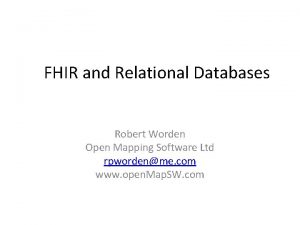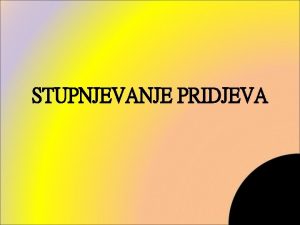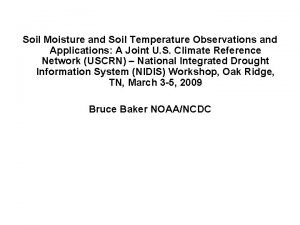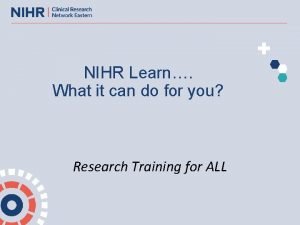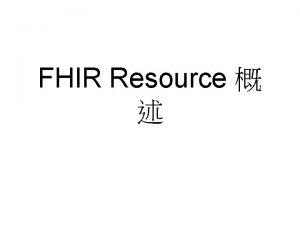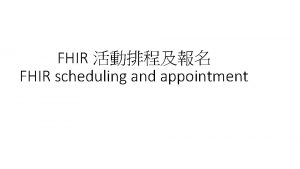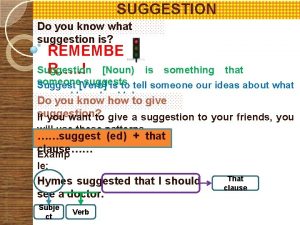CRN FHIR Forms Mapping Suggestion FHIR Principles Resources










- Slides: 10

CRN / FHIR Forms Mapping Suggestion

FHIR Principles - Resources (Simplified) ● Are the smallest unit of interchange and have a fixed and clear boundary ● Can be managed and understood in isolation ● Are useable, without alteration, in RESTful environments, classic message exchanges, human-centric clinical documents and enterprise SOA architecture ● Should be very common and useable in many different business transactions and be applicable for a wide spectrum of users and nationalities

FHIR Principles - Attributes (simplified) ● Resources contain only those attributes that are relevant to 80% of the implementers. ● Allow easy extension for the remaining 20% of elements


FHIR Patient The data in the Resource covers the "who" information about the patient: its attributes are focused on the demographic information necessary to support the administrative, financial and logistic procedures. A Patient record is generally created and maintained by each organization providing care for a patient. A patient or animal receiving care at multiple organizations may therefore have its information present in multiple Patient Resources. Not all concepts are included within the base resource (such as race, ethnicity, organ donor status, nationalilty, etc. ), but may be found in profiles defined for specific jurisdictions (e. g. , US Meaningful Use Program) or standard extensions. Such fields vary widely between jurisdictions and often have different names and valuesets for the similar concepts, but they are not similar enough to be able to map and exchange

FHIR Questionnaire & Response Questionnaire responses cover the need to communicate data originating from forms used in medical history examinations, research questionnaires and sometimes full clinical specialty records. In many systems this data is collected using user-defined screens and forms. Questionnaire responses record specifics about data capture - exactly what questions were asked, in what order, what answers were given, etc. Each of these questions is part of the Questionnaire, and as such the Questionnaire is a separately identifiable Resource, whereas the individual questions are not.

FHIR Procedure This resource is used to record the details of procedures performed on a patient. A procedure is an activity that is performed with or on a patient as part of the provision of care. Examples include surgical procedures, diagnostic procedures, endoscopic procedures, biopsies, counseling, physiotherapy, exercise, etc. Procedures may be performed by a healthcare professional, a friend or relative or in some cases by the patient themselves. This resource provides summary information about the occurrence of the procedure and is not intended to provide real-time snapshots of a procedure as it unfolds, though for long-running procedures such as psychotherapy, it could represent summary level information about overall progress. The creation of a resource to support detailed real-time procedure information awaits the identification of a specific implementation use-case to share such information.


Sample Form - SUI Procedure https: //cde. nlm. nih. gov/form. View? tiny. Id=Xk_CD 1 m. CH https: //cde. nlm. nih. gov/native. Render? tiny. Id=Xk_CD 1 m. CH&selected. Profile=New%20 Profile (Status is incomplete so it will not show up in queries)

